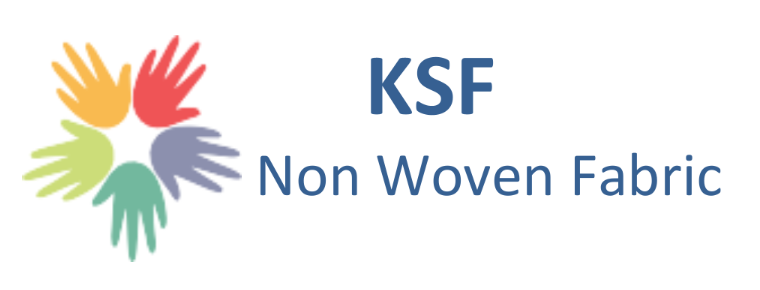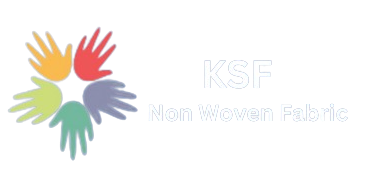The journey of non-woven fabric began in the mid-20th century, when the demand for faster and more cost-effective textile production methods emerged. Initially used for industrial purposes, non-woven fabrics quickly found their way into consumer products due to their adaptability and functionality.
Milestones in technology, such as the introduction of melt-blown and spun-bond processes, revolutionized the production of non-woven fabrics. These advancements not only increased the efficiency of manufacturing but also expanded the range of applications for non-woven materials.
Current Applications of Non-Woven Fabric
Healthcare Industry
The healthcare sector is one of the largest consumers of non-woven fabrics. From surgical masks and gowns to wound dressings, non-woven materials provide essential protection and hygiene. Their disposability, breathability, and barrier properties make them ideal for medical use, especially in infection control.
Fashion and Apparel
Non-woven fabrics have made a significant impact on the fashion industry. While traditionally seen as functional rather than fashionable, they are now being used in innovative ways in both high-end and fast fashion. Their versatility allows for the creation of unique textures and designs, making them a favorite among designers.
Agriculture
In agriculture, non-woven fabrics are used for crop protection, weed control, and soil stabilization. These fabrics are lightweight, durable, and allow for air and water permeability, making them an excellent choice for improving agricultural productivity while reducing environmental impact.
Construction and Infrastructure
Non-woven fabrics play a crucial role in construction, where they are used for insulation, roofing, and geotextiles. Their strength, durability, and resistance to moisture make them ideal for enhancing the longevity and sustainability of infrastructure projects.
Automotive Industry
The automotive industry also relies heavily on non-woven fabrics, particularly in car interiors. These materials are used for soundproofing, filtration, and cushioning, contributing to the comfort and safety of vehicles.
Advancements in Non-Woven Fabric Technology
Sustainable Materials and Processes
As the demand for eco-friendly products grows, the non-woven fabric industry is embracing sustainable materials and production processes. Bio-based fibers, such as polylactic acid (PLA) and bamboo, are becoming popular alternatives to synthetic fibers. Additionally, manufacturers are adopting energy-efficient and waste-reducing production techniques.
Innovations in Production Techniques
Technological advancements have led to the development of new production techniques, such as electrospinning and nanofiber technology. These methods allow for the creation of ultra-thin, highly durable non-woven fabrics with enhanced properties, opening up new possibilities for their use.
Enhanced Durability and Functionality
Non-woven fabrics are being engineered to offer improved durability and functionality. For example, some fabrics are now water-resistant, flame-retardant, or UV-protected, making them suitable for more demanding applications.
Environmental Impact and Sustainability
Eco-friendly Production Practices
The environmental impact of non-woven fabrics has been a growing concern. In response, the industry is shifting towards eco-friendly production practices. This includes reducing energy consumption, minimizing waste, and using renewable resources.
Biodegradable Non-Woven Fabrics
Biodegradability is a key focus for the future of non-woven fabrics. Manufacturers are developing biodegradable options that break down naturally after use, reducing the burden on landfills and the environment.
Recycling and Reusability
Recycling and reusability are also gaining traction in the non-woven fabric industry. Companies are exploring ways to recycle used non-woven products and incorporate them into new production, creating a circular economy.
The Role of Non-Woven Fabric in the Future of Healthcare
Medical Protective Gear
Non-woven fabrics will continue to play a vital role in healthcare, particularly in the production of protective gear. With the ongoing focus on infection control, the demand for high-quality, disposable medical products will remain strong.
Disposable Medical Products
From bandages to surgical drapes, disposable medical products made from non-woven fabrics offer convenience and safety. As the healthcare industry evolves, we can expect to see more advanced non-woven materials designed to meet specific medical needs.
Innovative Medical Applications
The future of non-woven fabrics in healthcare isn’t limited to disposable products. Innovations such as non-woven implants and smart wound dressings that monitor healing are just the beginning of what’s possible.
The Impact of Non-Woven Fabrics on the Fashion Industry
Sustainable Fashion
Sustainability is becoming a defining trend in the fashion industry, and non-woven fabrics are at the forefront. Their ability to be produced from recycled materials and their lower environmental impact make them an attractive option for eco-conscious designers.
Non-Woven Fabrics in Fast Fashion
In fast fashion, non-woven fabrics are prized for their cost-effectiveness and versatility. They allow brands to produce trendy clothing quickly and affordably, meeting the demands of fast-moving fashion cycles.
Future Trends in Non-Woven Fashion
As fashion continues to evolve, we can expect non-woven fabrics to be used in even more creative and unexpected ways. From biodegradable clothing to smart textiles that change color or texture, the future of non-woven fashion is full of potential.
Non-Woven Fabrics in Technological Advancements
Smart Non-Woven Fabrics
The integration of technology into non-woven fabrics is an exciting development. Smart fabrics embedded with sensors and electronic components can monitor health, change properties in response to environmental conditions, and even generate energy.
Integration with IoT (Internet of Things)
The Internet of Things (IoT) is paving the way for non-woven fabrics to become part of connected systems. Imagine non-woven fabrics in your home that can communicate with your devices, or clothing that adjusts to your body temperature—these innovations are on the horizon.
Role in Wearable Technology
Wearable technology is another area where non-woven fabrics are making an impact. Lightweight, flexible, and comfortable, non-woven materials are ideal for wearable devices, from fitness trackers to medical monitors.
Challenges in the Future of Non-Woven Fabrics
Environmental Concerns
Despite the advancements in sustainability, environmental concerns remain a challenge. The industry must continue to find ways to reduce its ecological footprint and address issues such as microplastic pollution.
Market Competition
The non-woven fabric market is highly competitive, with new players constantly entering the field. To stay ahead, companies must innovate and differentiate their products to meet the ever-changing demands of consumers.
Regulatory Challenges
Regulations around the production and use of non-woven fabrics are becoming stricter, particularly concerning environmental impact. Navigating these regulations while maintaining profitability will be a significant challenge for the industry.
Opportunities in the Non-Woven Fabric Industry
Growth in Emerging Markets
Emerging markets present a significant growth opportunity for the non-woven fabric industry. As economies develop, the demand for products such as hygiene products, medical supplies, and construction materials made from non-woven fabrics will increase.
Innovations in Product Offerings
Innovation is key to success in the non-woven fabric industry. Companies that invest in research and development to create new, high-performance products will have a competitive edge.
Potential for Customized Solutions
Customization is another area of opportunity. As businesses seek tailored solutions to meet their specific needs, non-woven fabric manufacturers that offer customizable products will be well-positioned for growth.
Conclusion
The future of non-woven fabrics is bright, with endless possibilities for innovation and expansion. From healthcare to fashion, technology to sustainability, non-woven fabrics will continue to shape the way we live and work. As the industry evolves, it will be essential to balance growth with environmental responsibility, ensuring that non-woven fabrics remain a sustainable solution for the future.

